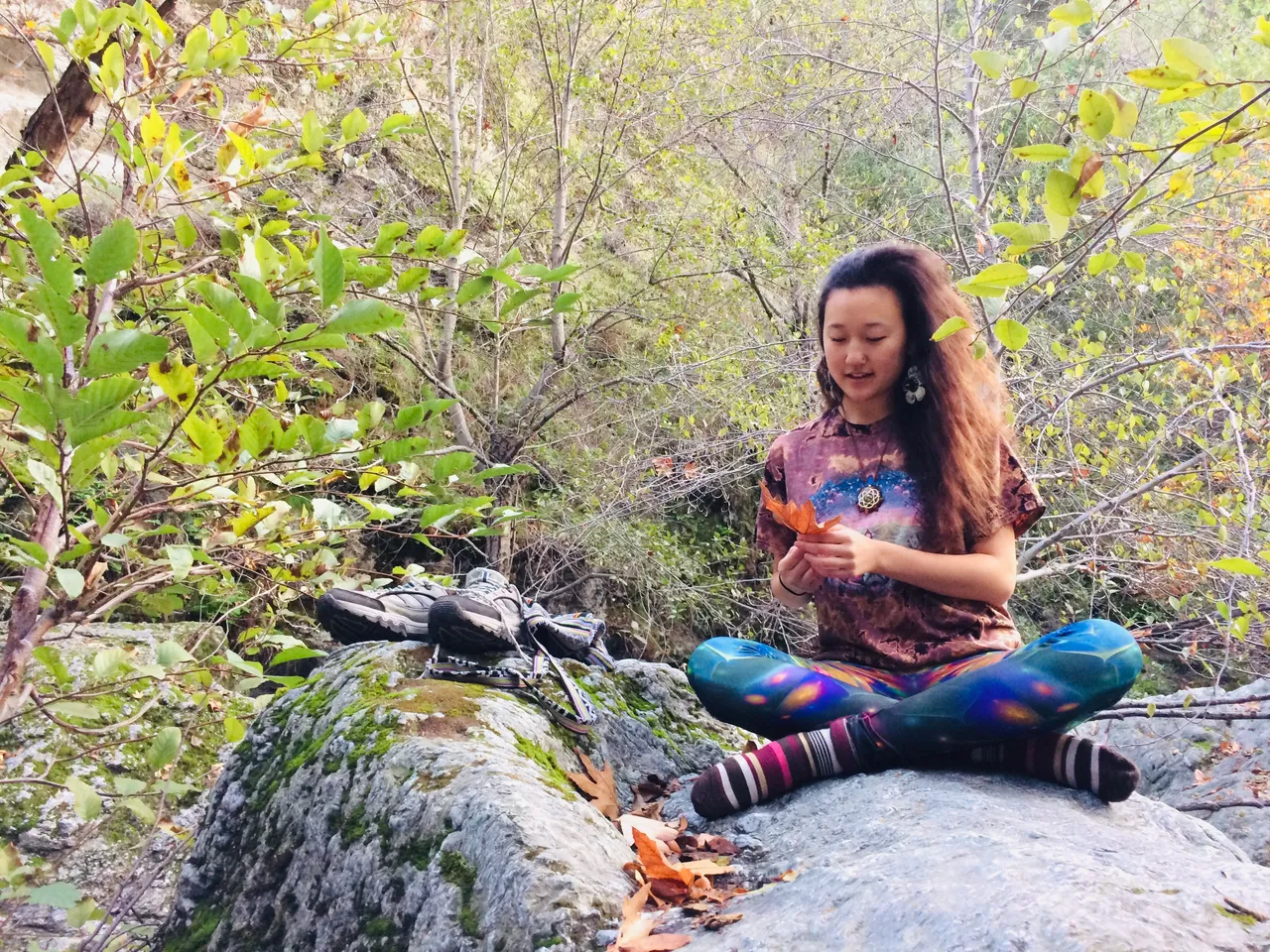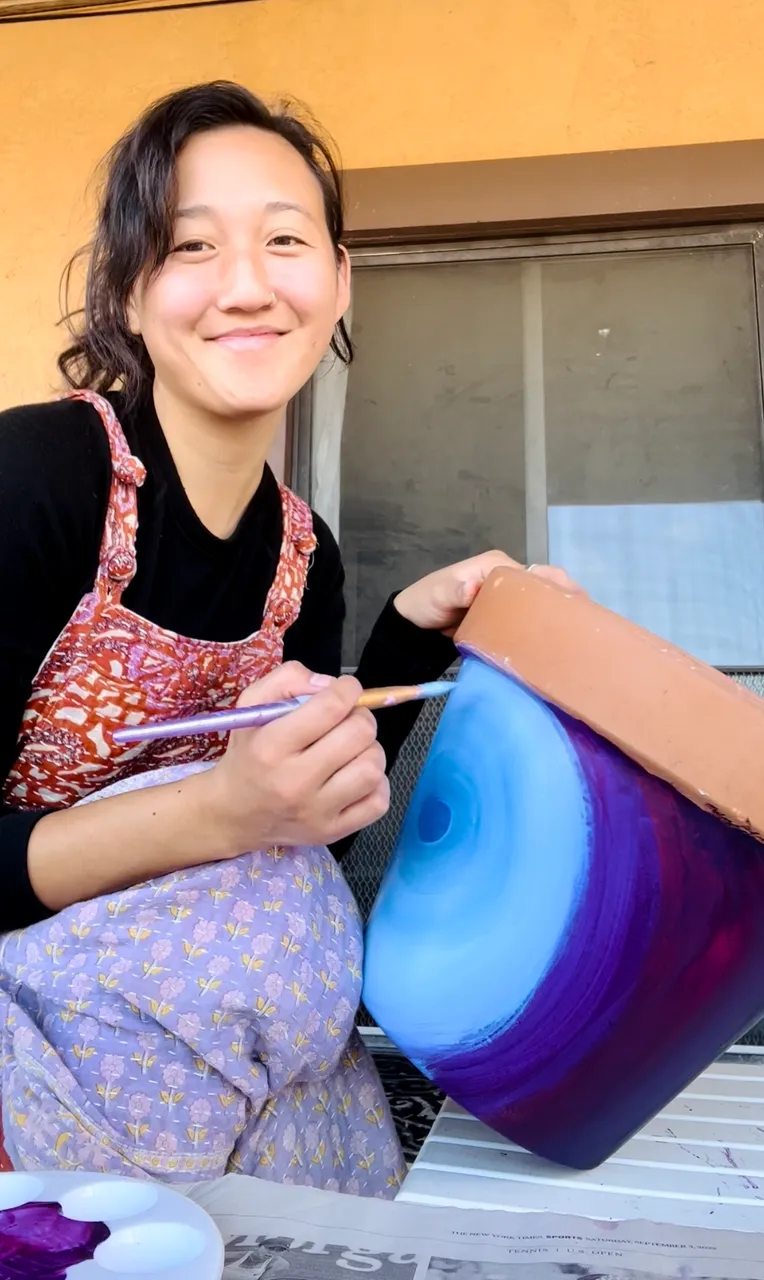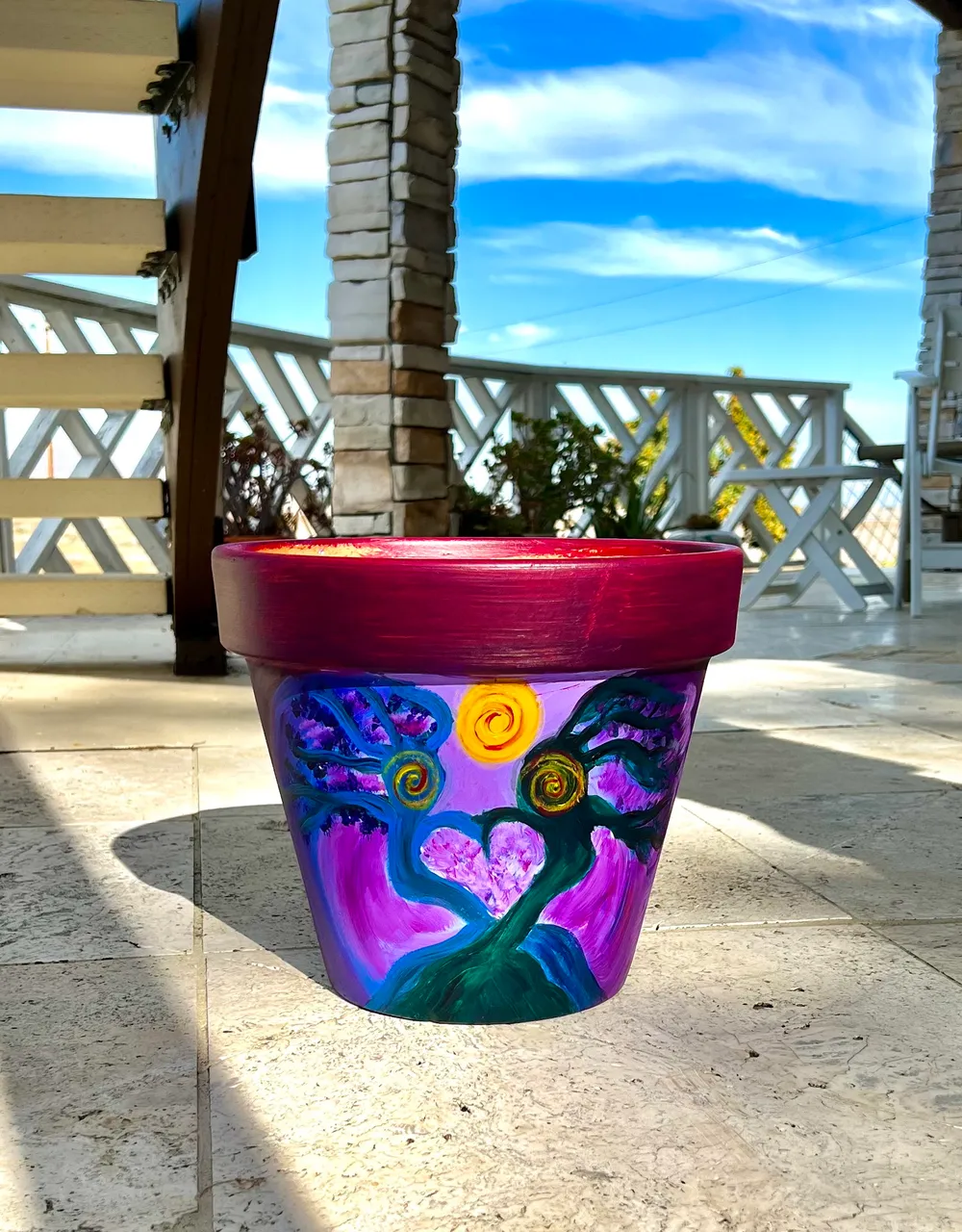
A picture of me sometime back in 2015
Today, one of my dear friends Kate who I work with at Safe Tech International asked me a question that hit deep.
“If you were healed at various points in your life, would you have created more beautiful things or less during that time?”
Among the variety of responses that came up in my mind that each had a place in the conversation, I mostly enjoyed sitting with the question.
If I know anything at all, I know that we never get to a place where we are fully healed, or where our healing is complete. I remember hearing once that healing is like a spiral. Instead of a linear process of “leveling up” and getting to some final destination of happiness or peace (or whatever we’re seeking), we might find that healing isn’t necessarily about outgrowing the past, but having a different relationship with it. The spiral allows us to see ourselves from a different point or location. Even though our wounded patterns stay the same and become a part of who we are, our consciousness is not the same. And once we find ourselves in a different location on the spiral, deeper insights and different choices might emerge, even if we might not be ready to receive them or we may occasionally fall back into a wounded pattern for the time being.
"The voyage of discovery lies not in seeking new vistas but in having new eyes."
- Marcel Proust
I don’t know if I would’ve created more beautiful things (or less) if I was “healed” at various points in my life. I’m starting to see that what we create and produce is a reflection of where we are on the spiral, at that moment in time. And I’m learning to trust the beauty of this process where I learn to appreciate who I am, as I am, in any moment in time.
“I would love to live like a river flows, carries by the surprise of its own unfolding.”
– John O’Donahue
I told Kate that I’ve made up my mind. I am holding off on making videos for Children’s Health Defense and will revisit this project at the start of the new year. It felt so freeing and relieving to share this. So much of my working adult life so far has been rooted in doing. Producing, achieving, putting myself out there in the community to help and serve. At one point I was juggling 3 jobs along with graduate school for two years. Despite the stress overload, I had found pride and comfort in knowing that I was out in the world doing things. So all was well. And much of this energy rewarded me experience, reputation, respect, and knowledge. So by no means do I regret the pursuit of doing.
Yet fast forward to now. Even looking back several months ago, I wouldn’t have imagined that I would be in a state of mind where all I want to do is dance, create art, and daydream. Where I feel increasingly called to sit in silence with the aches and pains of the world, as opposed to feeling like I have to be on top of my knowledge game or have to do something about it. Where lists, actions, and goals make me feel nauseous. Where I have an increasing desire to talk less in conversations, and listen more. Where my sexuality is being awakened in sensual ways, and not performative.
When my housemate was about to take a bunch of outdoor plant pots to the dump, I surprised myself by telling him I wanted to hold onto them so I could paint them.
What I appreciated about the process was that I didn't have a clue what I was going to paint. I just picked up the brush and started. Physical and mental relaxation deepened with every stroke.

Here’s one of the pots I just finished. Similarly to how I sang for the first time in years at my birthday gathering, I wanted to be able to express myself without feeling like I needed to be perfect or have everything together.

“You’re awakening to your feminine, the essence of being,” Kate had gently reflected back to me.
Indeed, according to Daoist perspectives of the masculine and feminine that transcend sex and gender, I am someone who has always carried more of the masculine energy. The masculine (yang) is action-oriented. Will, speed, skillful means, direction, focus, clarity of thought. Its shadows are unbalanced adrenaline seeking, excessive control, domination, aggression, objectification. The feminine (yin), on the other hand, is softness, slowness, rest, and receptivity. The feminine is the archetype of relationships, feelings, the connections and space between things, and what cannot always be predicted or explained with the rational mind. Its shadows can lie in indecisiveness, passivity, inactiveness, lack of Self or Form.
The feminine yin is a way of seeing and understanding the world. Reclaiming our feminine capacity is to value the subjective, the intuitive, the qualitative, to not limit our focus to the surfaces of things.
We each have the yin and yang within us. So it is not about exclusively relying on the masculine or feminine principle; it is about reclaiming wholeness and integrity in these dual, mutually arising truths.
As Jalaja Bonheim writes in The Sacred Ego, while women have indeed gained an enormous amount of power in the West, the feminine has not. In fact, most cultures afford the feminine less respect. Many women I’ve worked with have led with the masculine just as much (if not more) than many of my male counterparts... engaging in domination of the decisions, verbal loudness without depth and reflection, and control-seeking behavior.
Rachel Naomi Remen, a medical doctor known for her focus on relationship-centered medicine, speaks of the masculine and feminine in healthcare:
Reclaiming the sacred requires this kind of a double vision – the cultivation of a double vision that experiences the objective and the subjective worlds simultaneously.
The imbalance in the medical system, the emphasis on masculine-principle approaches and perceptions that pervades our entire culture, diminishes everybody. It diminishes the people who work within the system, and it diminishes the people who seek out the system for their healing. When you leave the doctor’s office you may feel diminished, even though you have been given the right diagnosis and the right pills. Think of the masculine symbol, the circle with the arrow on one side. If someone relates to you in a predominantly masculine-principle style, you experience their strength, their capacity. You get rescued, as it were, and you feel smaller.
What is it like, then, to relate to someone who is relating to you in a predominantly feminine-principle style? Think of the feminine symbol, the circle with the "plus" under it. This symbol is called Venus’s mirror. When someone relates to you from the feminine side of themselves, what you see reflected in Venus’s mirror is your own strength, your own capacity, your own uniqueness. What would the medical system be like if it could do that for us, as well as providing the right diagnosis, the right pills?
The yin is about comfort in the world of relationship, the world of connection, the interdependence of things. We have had a disease-centered medical care. We have moved to a more patient-centered form of care. What we need is a medicine based on right relationship.
What we have now is a medicine of isolation. The shadow side of the yang, or masculine principle, is isolation. We have actually institutionalized isolation in medicine. We even have a language that nobody can understand. There is no reason why true things cannot be said in little words.
The medical system does not trust process. The whole concept of "fixing" and "broken" suggests an insensitivity to the process nature of the world. The essential word of process is "yet." "Yet" is seeing with feminine eyes. We are all "works in process." That means that judgment is really inappropriate, or premature, because none of us are finished … yet.
The hyper-masculinity of our culture and political world teach us to rely on authority (as opposed to our own hearts or the wisdom of the community), to see our separateness over our interconnectedness, to measure our worth in how much we produce and achieve in a fast-paced world. War, domination, division, and control are embedded in almost every aspect of our institutions and global society relations.
My dad drilled the masculine into me. I still remember an early childhood experience of not finishing my track race in 5th grade, because I was so dreadfully nervous that he was watching me. I needed to be perfect for him. I ended up dry heaving on the last stretch, unable to finish the race as school volunteers ushered me to the grass to give me water. My dad was furious that I didn’t finish my race. He yelled and beat me all night, wondering how I was going to be successful in life if I couldn’t finish a damn race. That night, my dad had picked up the bowl of green beans and threw it at my head. I ducked just in time, and the bowl shattered into pieces against the wall right behind me, the sauce of the green beans splattering everywhere and all over me. “Clean this fucking mess up, you quitter.”
The part of me that feels like I need to perform endlessly and be perfect are shadows of the masculine that I’m learning how to have a different relationship with. I can respect the capacities in me to produce pretty incredible things, while also not feel like I need to solely identify with the doing parts of me. For the first time in my life, I’m feeling a pull towards the power of being, finding my hidden wholeness, reclaiming my feminine. Part of this is giving the masculine within me grace for its strengths and limits, including the role that my dad and larger cultural values played in this. Owning my feminine while also deepening my masculine will look like a lot of different things on a practical and specific level.
“What a beautiful thing that your own healing is paralleled with the healing of our world, where we might step into the collective feminine together and not be so driven by the overuse of the masculine in our world,” Kate added as we finished our call.
If our world needs more balance between the masculine and feminine, what would that look like? How would that inform the way we do things in our work, the relationships in our lives and how we treat each other, and how we engage in our media and political systems?